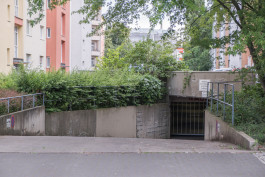
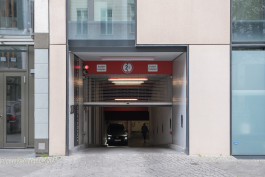
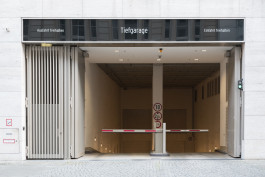
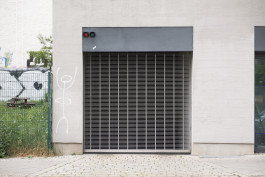
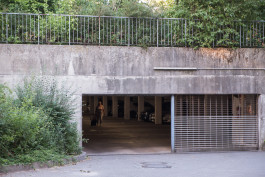
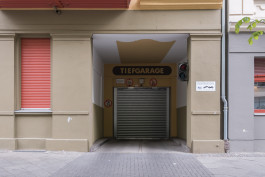
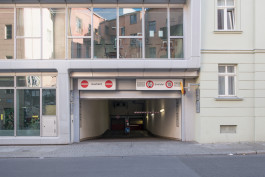
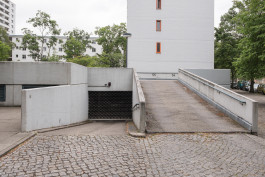
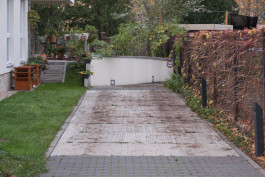
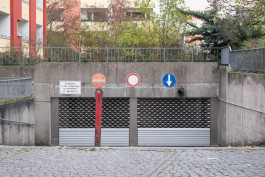
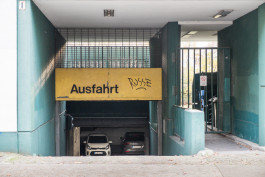
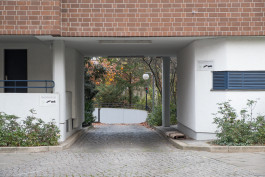
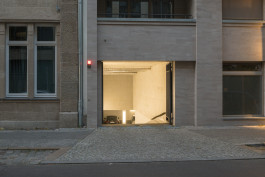
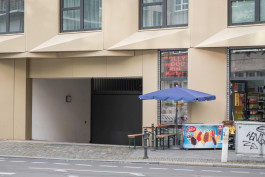
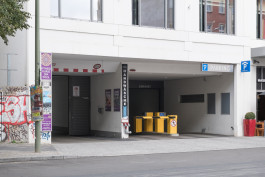
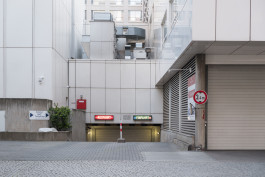
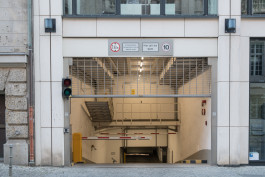
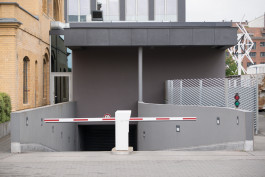
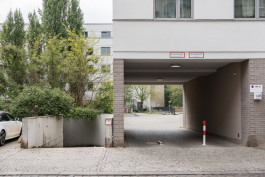
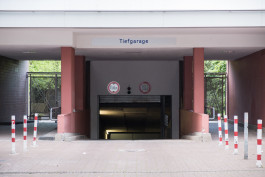
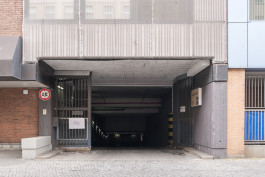
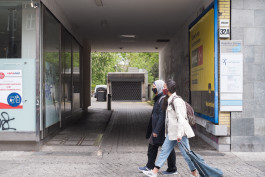
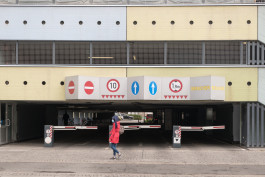
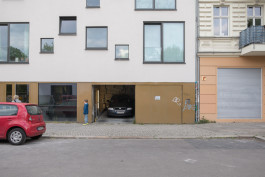
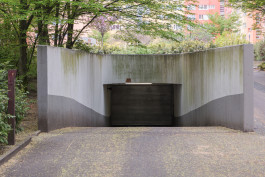
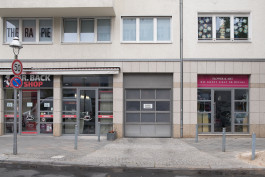
Underground Parking Ramps
The photographs of Underground Parking Ramps are taken at the time of the first lockdown in 2020. All motifs were taken walking around my apartment between Berlin-Wedding, -Mitte and -Prenzlauer Berg. In the meantime, I have collected about 260 motifs on extended walks.
I am interested in the motif Underground Parking Ramp both architecturally, urbanistically and photographically (problem: bright facade and deep driveway). I have compiled a concise selection of the motif here.
In the style of street photography, I have taken extremely different underground garage entrances in changing perspectives, which fan out a wide spectrum of contexts: from townhouse style with partly high-tech underground garages to old formations of the 1960s or 70s, from historicist facades from the 19th century with bullet holes to supposedly graffiti-proof surfaces.
In terms of functionality, the Underground Parking Ramps strikes me as a good witness to the automobile-based culture in which we live. Initially, I thought that another use for it would be found in the near future. Now it is safe to assume that e-mobility will take over underground parking.
The Underground Parking Ramps document historical developments of architecture, technology, infrastructure, social use and context, and even the semiotics of the public sphere. They deny the touristic gaze, but can provide deep insights into the city.
literature
Anton Pech, Gunther Warmuth, Klaus Jens, Johannes Zeininger, Parkhäuser – Garagen, Grundlagen, Planung, Betrieb, 2009
Simon Henley, The Architecture of Parking, 2007a


























Underground Parking Ramps
The photographs of Underground Parking Ramps are taken at the time of the first lockdown in 2020. All motifs were taken walking around my apartment between Berlin-Wedding, -Mitte and -Prenzlauer Berg. In the meantime, I have collected about 260 motifs on extended walks.
I am interested in the motif Underground Parking Ramp both architecturally, urbanistically and photographically (problem: bright facade and deep driveway). I have compiled a concise selection of the motif here.
In the style of street photography, I have taken extremely different underground garage entrances in changing perspectives, which fan out a wide spectrum of contexts: from townhouse style with partly high-tech underground garages to old formations of the 1960s or 70s, from historicist facades from the 19th century with bullet holes to supposedly graffiti-proof surfaces.
In terms of functionality, the Underground Parking Ramps strikes me as a good witness to the automobile-based culture in which we live. Initially, I thought that another use for it would be found in the near future. Now it is safe to assume that e-mobility will take over underground parking.
The Underground Parking Ramps document historical developments of architecture, technology, infrastructure, social use and context, and even the semiotics of the public sphere. They deny the touristic gaze, but can provide deep insights into the city.
literature
Anton Pech, Gunther Warmuth, Klaus Jens, Johannes Zeininger, Parkhäuser – Garagen, Grundlagen, Planung, Betrieb, 2009
Simon Henley, The Architecture of Parking, 2007a